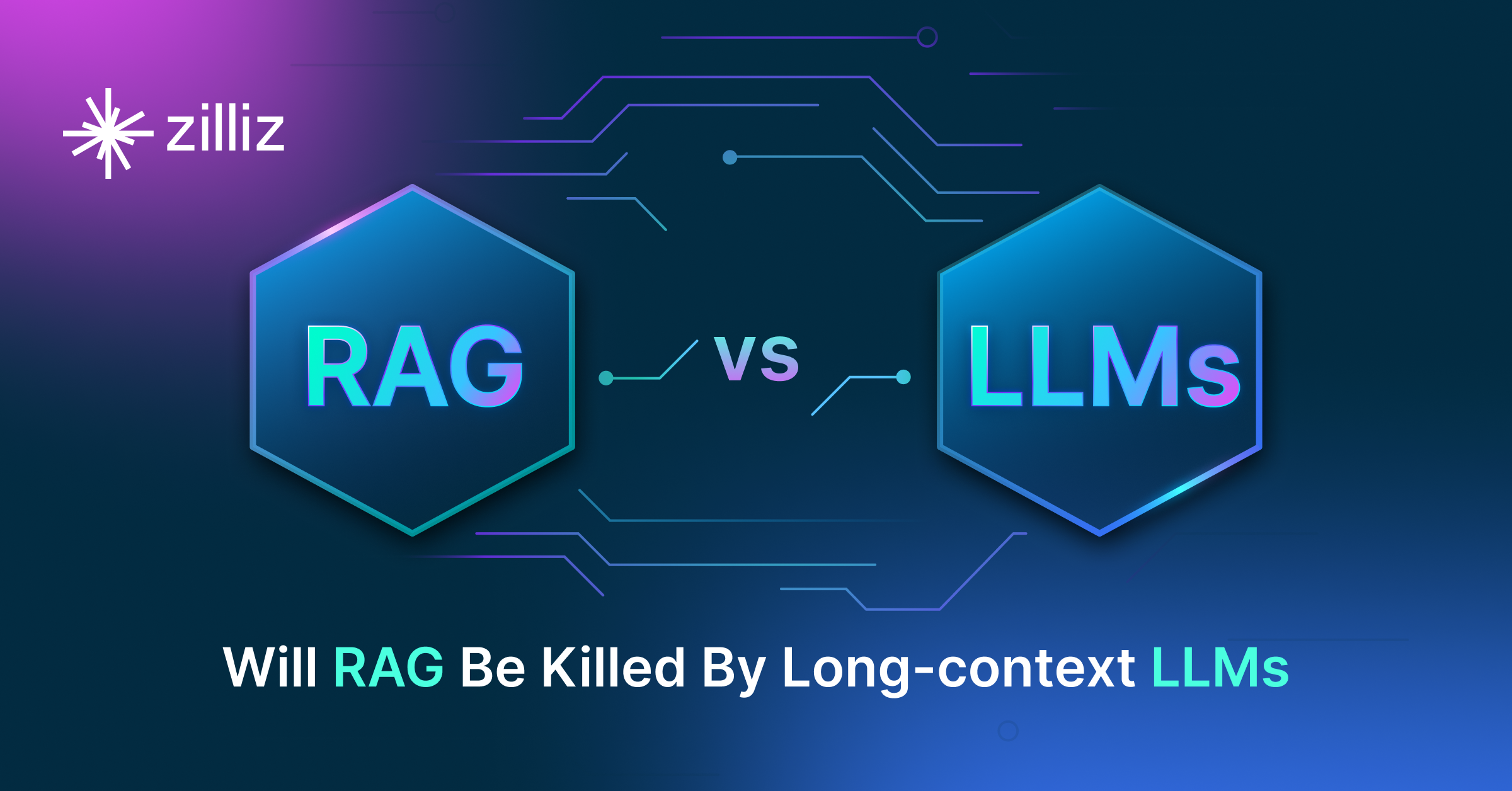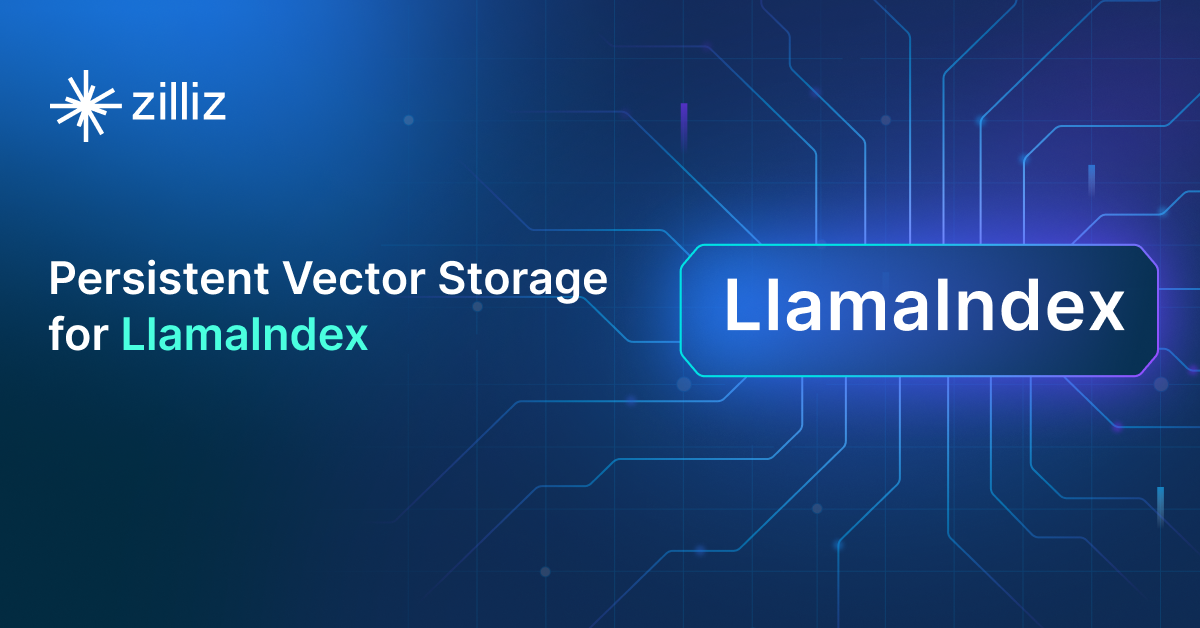Build RAG Chatbot with LangChain, LangChain vector store, Databricks Llama 3.1, and voyage-3-large
Introduction to RAG
Retrieval-Augmented Generation (RAG) is a game-changer for GenAI applications, especially in conversational AI. It combines the power of pre-trained large language models (LLMs) like OpenAI’s GPT with external knowledge sources stored in vector databases such as Milvus and Zilliz Cloud, allowing for more accurate, contextually relevant, and up-to-date response generation. A RAG pipeline usually consists of four basic components: a vector database, an embedding model, an LLM, and a framework.
Key Components We'll Use for This RAG Chatbot
This tutorial shows you how to build a simple RAG chatbot in Python using the following components:
- LangChain: An open-source framework that helps you orchestrate the interaction between LLMs, vector stores, embedding models, etc, making it easier to integrate a RAG pipeline.
- LangChain in-memory vector store: an in-memory, ephemeral vector store that stores embeddings in-memory and does an exact, linear search for the most similar embeddings. The default similarity metric is cosine similarity, but can be changed to any of the similarity metrics supported by ml-distance. It is intended for demos and does not yet support ids or deletion. (If you want a much more scalable solution for your apps or even enterprise projects, we recommend using Zilliz Cloud, which is a fully managed vector database service built on the open-source Milvusand offers a free tier supporting up to 1 million vectors.)
- Databricks Llama 3.1: This advanced generative model from Databricks focuses on data-centric AI and collaborative analytics. It excels in scalable machine learning tasks, providing robust insights and predictions from large datasets. Ideal for organizations looking to leverage data for automated reporting, interactive data exploration, and enhanced decision-making processes.
- Voyage-3-Large: This model is designed for generative tasks, offering enhanced creativity and contextual understanding. With robust training on diverse datasets, it excels in producing coherent narratives and dialogue, making it ideal for applications in storytelling, content creation, and interactive experiences where imaginative output is essential.
By the end of this tutorial, you’ll have a functional chatbot capable of answering questions based on a custom knowledge base.
Note: Since we may use proprietary models in our tutorials, make sure you have the required API key beforehand.
Step 1: Install and Set Up LangChain
%pip install --quiet --upgrade langchain-text-splitters langchain-community langgraph
Step 2: Install and Set Up Databricks Llama 3.1
pip install -qU "databricks-langchain"
import getpass
import os
if not os.environ.get("DATABRICKS_TOKEN"):
os.environ["DATABRICKS_TOKEN"] = getpass.getpass("Enter API key for Databricks: ")
from databricks_langchain import ChatDatabricks
os.environ["DATABRICKS_HOST"] = "https://example.staging.cloud.databricks.com/serving-endpoints"
llm = ChatDatabricks(endpoint="databricks-meta-llama-3-1-70b-instruct")
Step 3: Install and Set Up voyage-3-large
pip install -qU langchain-voyageai
import getpass
import os
if not os.environ.get("VOYAGE_API_KEY"):
os.environ["VOYAGE_API_KEY"] = getpass.getpass("Enter API key for Voyage AI: ")
from langchain-voyageai import VoyageAIEmbeddings
embeddings = VoyageAIEmbeddings(model="voyage-3-large")
Step 4: Install and Set Up LangChain vector store
pip install -qU langchain-core
from langchain_core.vectorstores import InMemoryVectorStore
vector_store = InMemoryVectorStore(embeddings)
Step 5: Build a RAG Chatbot
Now that you’ve set up all components, let’s start to build a simple chatbot. We’ll use the Milvus introduction doc as a private knowledge base. You can replace it with your own dataset to customize your RAG chatbot.
import bs4
from langchain import hub
from langchain_community.document_loaders import WebBaseLoader
from langchain_core.documents import Document
from langchain_text_splitters import RecursiveCharacterTextSplitter
from langgraph.graph import START, StateGraph
from typing_extensions import List, TypedDict
# Load and chunk contents of the blog
loader = WebBaseLoader(
web_paths=("https://milvus.io/docs/overview.md",),
bs_kwargs=dict(
parse_only=bs4.SoupStrainer(
class_=("doc-style doc-post-content")
)
),
)
docs = loader.load()
text_splitter = RecursiveCharacterTextSplitter(chunk_size=1000, chunk_overlap=200)
all_splits = text_splitter.split_documents(docs)
# Index chunks
_ = vector_store.add_documents(documents=all_splits)
# Define prompt for question-answering
prompt = hub.pull("rlm/rag-prompt")
# Define state for application
class State(TypedDict):
question: str
context: List[Document]
answer: str
# Define application steps
def retrieve(state: State):
retrieved_docs = vector_store.similarity_search(state["question"])
return {"context": retrieved_docs}
def generate(state: State):
docs_content = "\n\n".join(doc.page_content for doc in state["context"])
messages = prompt.invoke({"question": state["question"], "context": docs_content})
response = llm.invoke(messages)
return {"answer": response.content}
# Compile application and test
graph_builder = StateGraph(State).add_sequence([retrieve, generate])
graph_builder.add_edge(START, "retrieve")
graph = graph_builder.compile()
Test the Chatbot
Yeah! You've built your own chatbot. Let's ask the chatbot a question.
response = graph.invoke({"question": "What data types does Milvus support?"})
print(response["answer"])
Example Output
Milvus supports various data types including sparse vectors, binary vectors, JSON, and arrays. Additionally, it handles common numerical and character types, making it versatile for different data modeling needs. This allows users to manage unstructured or multi-modal data efficiently.
Optimization Tips
As you build your RAG system, optimization is key to ensuring peak performance and efficiency. While setting up the components is an essential first step, fine-tuning each one will help you create a solution that works even better and scales seamlessly. In this section, we’ll share some practical tips for optimizing all these components, giving you the edge to build smarter, faster, and more responsive RAG applications.
LangChain optimization tips
To optimize LangChain, focus on minimizing redundant operations in your workflow by structuring your chains and agents efficiently. Use caching to avoid repeated computations, speeding up your system, and experiment with modular design to ensure that components like models or databases can be easily swapped out. This will provide both flexibility and efficiency, allowing you to quickly scale your system without unnecessary delays or complications.
LangChain in-memory vector store optimization tips
LangChain in-memory vector store is just an ephemeral vector store that stores embeddings in-memory and does an exact, linear search for the most similar embeddings. It has very limited features and is only intended for demos. If you plan to build a functional or even production-level solution, we recommend using Zilliz Cloud, which is a fully managed vector database service built on the open-source Milvus and offers a free tier supporting up to 1 million vectors.)
Databricks Llama 3.1 optimization tips
Databricks Llama 3.1 is designed for scalable and high-performance RAG applications, making it crucial to optimize retrieval and processing efficiency. Leverage Databricks' distributed computing capabilities to parallelize retrieval and embedding computations, reducing latency for large datasets. Implement hybrid search (combining vector and keyword search) to enhance retrieval relevance. Use optimized prompt templates to minimize token usage while maximizing response quality. Fine-tune temperature (0.1–0.3) for factual consistency and adjust top-k/top-p for response control. Cache frequently queried results to reduce redundant computations, improving both cost and performance. If dealing with large-scale queries, utilize Databricks’ auto-scaling to dynamically allocate resources and avoid bottlenecks. Implement incremental indexing for real-time updates to your vector store, ensuring retrieval accuracy remains high over time.
voyage-3-large optimization tips
voyage-3-large provides enhanced reasoning capabilities, making it ideal for complex RAG tasks requiring deep contextual understanding. Optimize retrieval by implementing a multi-step ranking system that prioritizes highly relevant documents while filtering out lower-quality information. Use structured prompts with clearly delineated context and user queries to improve comprehension. Adjust temperature (0.1–0.3) and fine-tune top-k and top-p settings to maintain accuracy and prevent excessive variability. Take advantage of parallelized inference and request batching to improve processing efficiency. Leverage caching for high-frequency queries to reduce costs and latency. In multi-model setups, deploy voyage-3-large for intricate reasoning tasks while using smaller models for less complex queries to balance cost and performance effectively.
By implementing these tips across your components, you'll be able to enhance the performance and functionality of your RAG system, ensuring it’s optimized for both speed and accuracy. Keep testing, iterating, and refining your setup to stay ahead in the ever-evolving world of AI development.
RAG Cost Calculator: A Free Tool to Calculate Your Cost in Seconds
Estimating the cost of a Retrieval-Augmented Generation (RAG) pipeline involves analyzing expenses across vector storage, compute resources, and API usage. Key cost drivers include vector database queries, embedding generation, and LLM inference.
RAG Cost Calculator is a free tool that quickly estimates the cost of building a RAG pipeline, including chunking, embedding, vector storage/search, and LLM generation. It also helps you identify cost-saving opportunities and achieve up to 10x cost reduction on vector databases with the serverless option.
 Calculate your RAG cost
Calculate your RAG cost
What Have You Learned?
Congratulations on making it through this tutorial! You’ve just embarked on an exciting journey into the world of cutting-edge Retrieval-Augmented Generation (RAG) systems! What a fantastic array of tools you’ve learned to integrate! By harnessing LangChain as your robust framework, you've seamlessly connected the dots, ensuring that all components work in synergy. The vector database you learned about ensures lightning-fast searches, allowing you to sift through massive datasets with ease and efficiency. Combine that with the Leverageable conversational power of Databricks Llama 3.1, and you have a recipe for an LLM that brings your queries to life, responding in a way that feels natural and engaging.
But let’s not forget how the embedding model plays its part, generating rich semantic representations that make the retrieval process smarter and more context-aware. This means you can trust that the responses you're getting are not just accurate but also relevant! Plus, the bonus tips on optimization and that handy free cost calculator you now have at your disposal will help you streamline your development process, making it easier than ever to get the most out of your setup.
So, what’s next? It’s time to take that knowledge and start building, optimizing, and innovating your very own RAG applications! The possibilities are endless, and your creativity is the only limit. Dive in, experiment, and let your ideas take flight! You’ve got this!
Further Resources
🌟 In addition to this RAG tutorial, unleash your full potential with these incredible resources to level up your RAG skills.
- How to Build a Multimodal RAG | Documentation
- How to Enhance the Performance of Your RAG Pipeline
- Graph RAG with Milvus | Documentation
- How to Evaluate RAG Applications - Zilliz Learn
- Generative AI Resource Hub | Zilliz
We'd Love to Hear What You Think!
We’d love to hear your thoughts! 🌟 Leave your questions or comments below or join our vibrant Milvus Discord community to share your experiences, ask questions, or connect with thousands of AI enthusiasts. Your journey matters to us!
If you like this tutorial, show your support by giving our Milvus GitHub repo a star ⭐—it means the world to us and inspires us to keep creating! 💖
- Introduction to RAG
- Key Components We'll Use for This RAG Chatbot
- Step 1: Install and Set Up LangChain
- Step 2: Install and Set Up Databricks Llama 3.1
- Step 3: Install and Set Up voyage-3-large
- Step 4: Install and Set Up LangChain vector store
- Step 5: Build a RAG Chatbot
- Optimization Tips
- RAG Cost Calculator: A Free Tool to Calculate Your Cost in Seconds
- What Have You Learned?
- Further Resources
- We'd Love to Hear What You Think!
Content
Vector Database at Scale
Zilliz Cloud is a fully-managed vector database built for scale, perfect for your RAG apps.
Try Zilliz Cloud for Free


